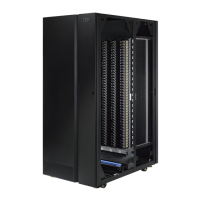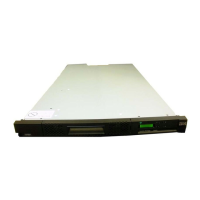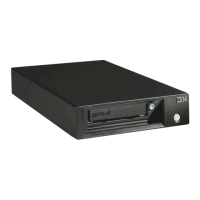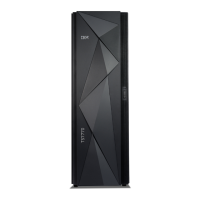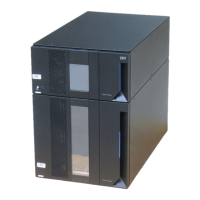v For a list of compatible software, operating systems, and servers for LTO and
3592 tape drives, download the Independent Software Vendor (ISV) Matrix from
the TS4500 Tape Library web page.
v For complete IBM storage interoperability information for the TS4500 tape
library in a storage area network (SAN) configuration, refer to the IBM System
Storage Interoperation Center (SSIC). The SSIC has details on supported
operating systems, servers, switches, and adapters.
Fibre Channel technology combines the best features of traditional input/output
interfaces with the best features of networking interfaces. The technology offers a
transport mechanism for delivering commands, and provides high performance by
allowing processing to be done in the hardware.
You can establish Fibre Channel connections between Fibre Channel ports that are
in the TS4500 tape library, one or more servers, and the connecting network. The
network can consist of such elements as switches, hubs, bridges, and repeaters.
Library sharing
The TS4500 tape library can be configured into one or more logical libraries that
can be shared by multiple applications.
The guided setup for the TS4500 tape library allows a single application to operate
the library. Often, however, it is advantageous to be able to share a single library
between heterogeneous or homogeneous applications. Some applications (and
some servers) do not allow for sharing a library between systems. With the TS4500
tape library, however, you can create configurations that enable the library to
process commands from multiple heterogeneous applications (such as an IBM
System p application and a Windows application) and multiple homogeneous
applications (for example, the same application run by several System p servers).
Use the TS4500 management GUI to perform the following actions:
v Configure the library so that it is partitioned into separate logical libraries that
independently communicate with separate applications through separate control
paths. This configuration (see example ▌1▐ in Figure 11 on page 41) requires no
special capabilities from the server or application.
v Configure any single logical library (including the entire physical library) so that
it is shared by two or more servers that are running the same application.
Depending on the capabilities of the server and application, there are several
ways to set up this type of configuration. Three typical ways include:
– Configuring one server (mainframe host) to communicate with the library
through a single control path; all other servers send requests to that server
through a network (see example ▌2▐ in Figure 11 on page 41). This
configuration is used by Tivoli
®
Storage Manager (TSM).
– Configuring all of the servers to communicate with the library through a
single, common control path (see example ▌3▐ in Figure 11 on page 41). This
configuration is used in high-availability environments such as
High-Availability Cluster Multi-Processing (HACMP
™
) from IBM and Systems
Management Server and Clustered Server Environments from Microsoft.
Multi-initiator configurations are only supported by certain adapters and
independent software vendors (ISVs). Check with your ISV.
Chapter 1. Overview 39
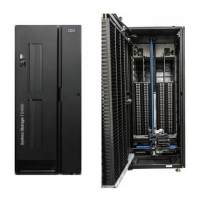
